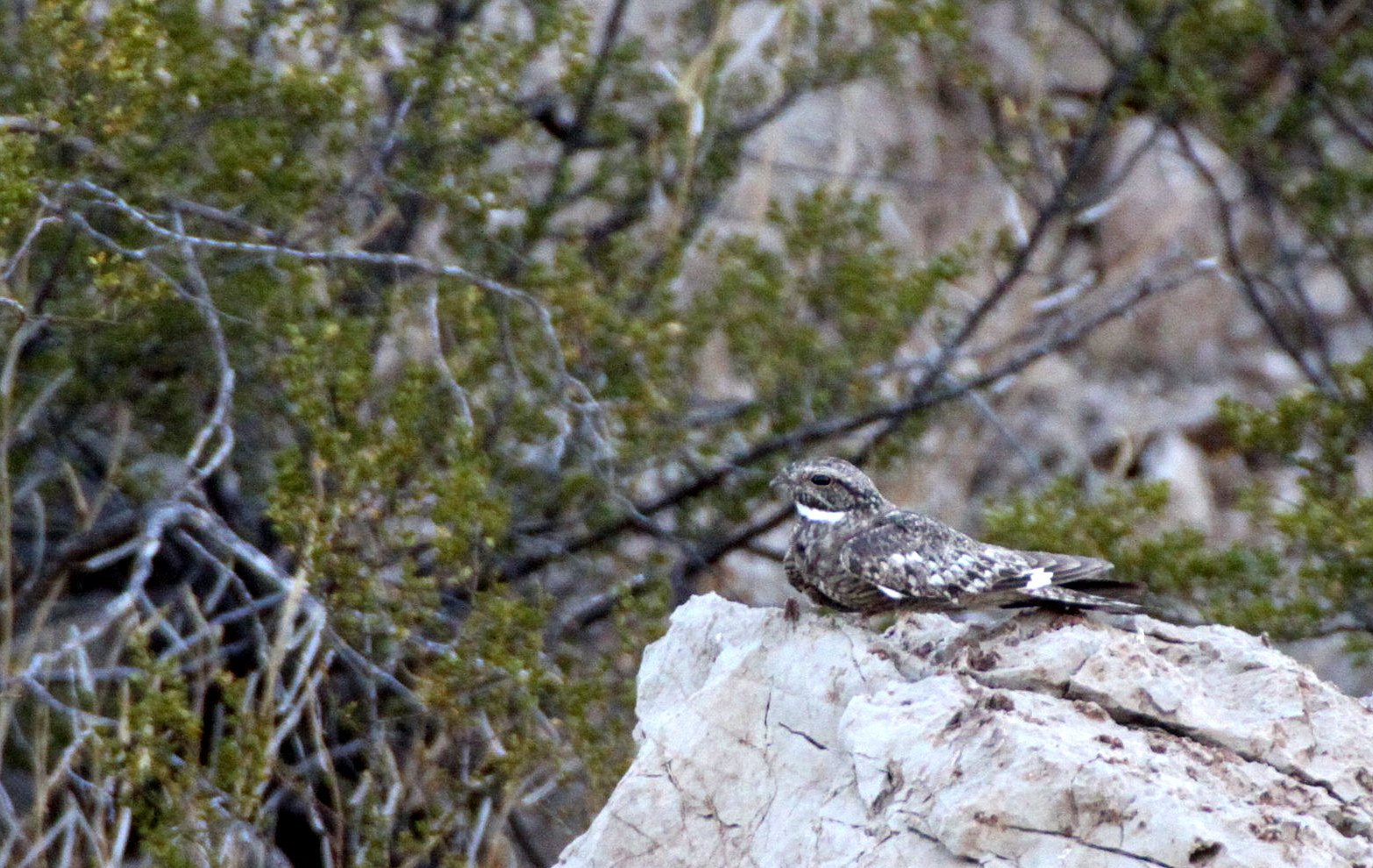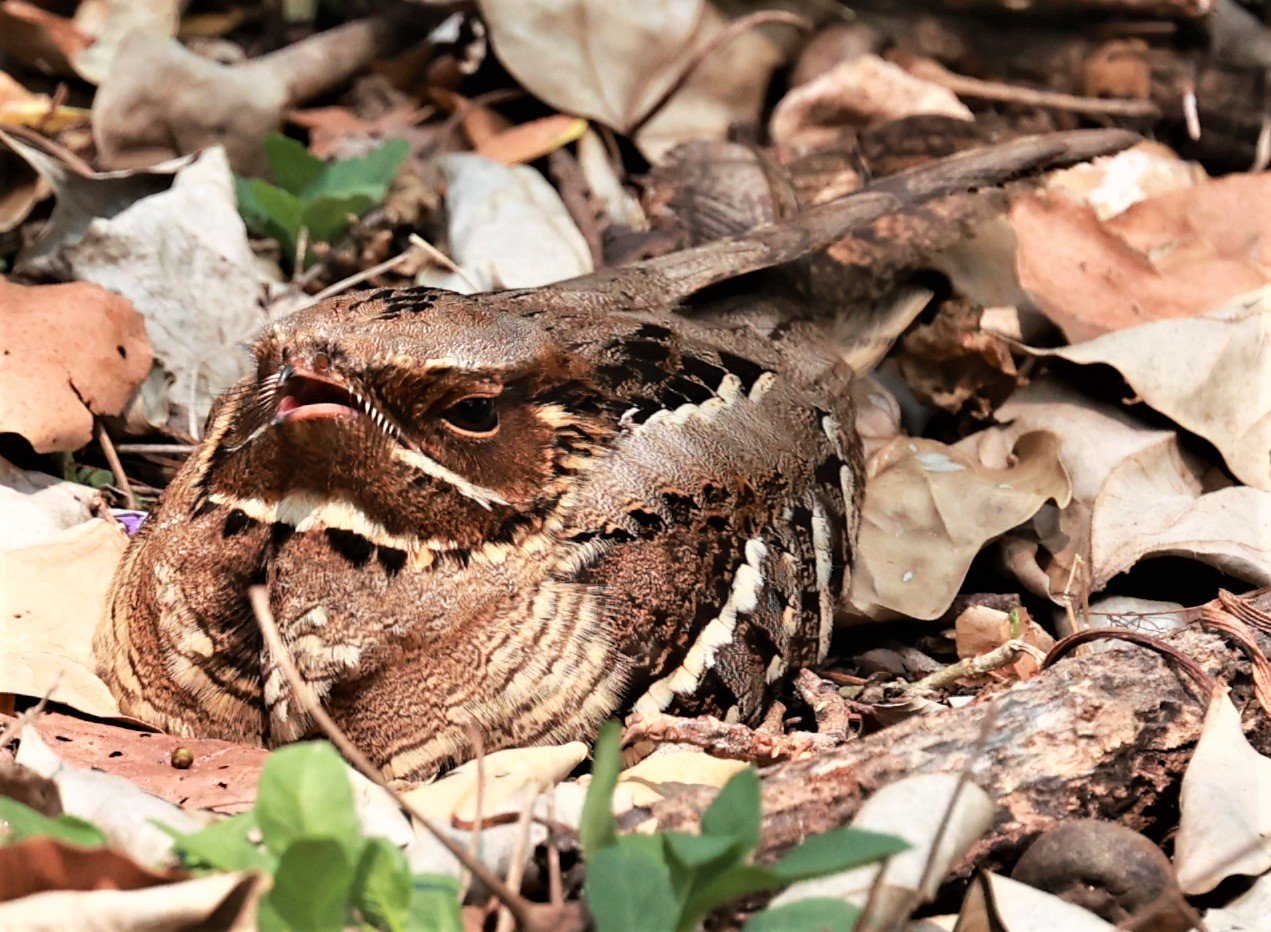
Family Caprimulgidae, Nightjars

Nightjars are medium-sized nocturnal or crepuscular birds in the family Caprimulgidae and order Caprimulgiformes, characterised by long wings, short legs, and very short bills. They are sometimes called goatsuckers, due to the ancient folk tale that they sucked the milk from goats (the Latin for goatsucker is caprimulgus), or bugeaters, their primary source of food being insects. Some New World species are called nighthawks. The English word "nightjar" originally referred to the European nightjar.
Large-tailed Nightjar in Kaeng Krachan National Park, Thailand
Nightjars are found all around the world, with the exception of Antarctica and certain island groups such as the Seychelles. They can be found in a variety of habitats, most commonly the open country with some vegetation. They usually nest on the ground, with a habit of resting and roosting on roads.
The subfamilies of nightjars have similar characteristics, including small feet, of little use for walking, and long, pointed wings. Typical nightjars, though, have rictal bristles, longer bills, and softer plumage. The colour of their plumage and their unusual perching habits help conceal them during the day.
Traditionally, nightjars have been divided into two subfamilies—the Caprimulginae, or typical nightjars with 79 known species, and the Chordeilinae, or nighthawks of the New World, with 10 known species. The groups are similar in most respects, but the typical nightjars have rictal bristles, longer bills, and softer plumage. Their soft plumage is cryptically coloured to resemble bark or leaves, and some species, unusual for birds, perch along a branch rather than across it, helping to conceal them during the day. The subfamilies of nightjars have similar characteristics, including small feet, of little use for walking, and long, pointed wings.
The common poorwill, Phalaenoptilus nuttallii, is unique as a bird that undergoes a form of hibernation, becoming torpid and with a much reduced body temperature for weeks or months, although other nightjars can enter a state of torpor for shorter periods.
In their pioneering DNA-DNA hybridisation work, Sibley and Ahlquist found that the genetic difference between the eared nightjars and the typical nightjars was, in fact, greater than that between the typical nightjars and the nighthawks of the New World. Accordingly, they placed the eared nightjars in a separate family, the Eurostopodidae (9 known species), but the family has not yet been widely adopted.
Subsequent work, both morphological and genetic, has provided support for the separation of the typical and the eared nightjars, and some authorities have adopted this Sibley-Ahlquist recommendation, and also the more far-reaching one to group all the owls (traditionally Strigiformes) together in the Caprimulgiformes. The listing below retains a more orthodox arrangement, but recognises the eared nightjars as a separate group. For more detail and an alternative classification scheme, see Caprimulgiformes and Sibley-Ahlquist taxonomy.
The below are my galleries of ten species I have seen over the years. Follow the links on the images:

Collared Nightjar (Gactornis enarratus) Madagascar
Eurasian Nightjar (Caprimulgus europaeus) Spain

Common Nighthawk (Chordeiles minor) Western North America
Grey Nightjar (Caprimulgus jotaka) Gujarat

Indian Nightjar (Caprimulgus asiaticus) Thailand
Large-tailed Nightjar (Caprimulgus macrurus) Thailand

Jerdon's nightjar (Caprimulgus atripennis) Sri Lanka
Long-tailed Nightjar (Caprimulgus climacurus) Ethiopia

Fiery-necked Nightjar (Caprimulgus pectoralis) South Africa
Little Nightjar (Setopagis parvula) Emas National Park, Goias Brazil
Band-tailed Nighthawk (Nyctiprogne leucopyga) Riau River & Rio Negro Region Southwest of Manaus
Rufous-cheeked Nightjar (Caprimulgus rufigena) South Africa
Scissor-tailed Nightjar (Hydropsalis torquata) Fazenda Garibaldi, Sao Paulo State
Pauraque (Nyctidromus albicollis) Many locations in Brazil














